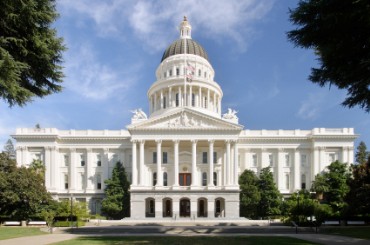Politicians sound off at Sacramento conference
During a field trip to Sacramento on Feb. 1, junior Kate Pellegrini eagerly seized the opportunity to question Senate Republican Leader Bob Huff about the future of California’s education system. She asked why a whopping 97 percent of all cuts are aimed towards education and how he planned on adjusting or fixing this issue:
“Well, stay tuned,” he said.
Students seem to have no choice but to stay tuned as our state government delves into possible changes to the current education system. In December of last year, Gov. Jerry Brown announced that K-12 school budgets would be reduced by about $330 million, including $248 million that accounts for bus transportation. The University of California, California State University, and the state’s community college system have lost an additional $100 million.
Under the governor’s proposed plan, the sales tax would increase by half a cent and income taxes would increase between one and two percentage points depending on whether people earn at least $500,000 per year. These taxes would expire after five years. If Brown’s tax measure fails to pass, public school funding could automatically be cut by $4.8 billion.
Senate President Pro Tem Darrell Steinberg is just one of the many politicians who support Brown’s most recent plan. He explained that strengthening the public school system is of importance to him:
“Certainly every politician when asked a question about education will tell you that it’s their priority, and education is my priority,” he stated. “We have a responsibility to drill down and suggest ways to improve the system within California.”
And while Steinberg went into detail about the decreasing of graduation and college admission rates of high school students and how such issues could be resolved, he never touched on the fact that the public education system has been suffering due to lack of funding.
School administrations and teachers strive to provide students with courses that both challenge and help them to direct their career paths. However, the reduction of availability of these classes and the increased amount of students put into each class slowly weaken the education system.
In addition to this, both Democrats and Republicans currently serving our state government have voted in favor of these education cuts. Can politicians honestly argue that education is their priority when supporting such drastic cuts that affect all California students?
One example of a politician who is interested in instigating change when it comes to education is Democratic Assembly Speaker John Perez. He firmly believes that California has the opportunity to grow and thrive so long as the state attempts to reform the education budget. “We need to find solutions that ease education finance burden,” he said.
In fact, Perez and Steinberg have recently proposed a plan in which undergraduate students from families with a household income of less than $150,000 would have their tuition and fees cut down by two-thirds. California State University students would save about $4,000 annually while University of California students would have about $8,100 annual savings. This program, called the “Middle Class Scholarship,” would cost the state about $1 billion a year; this would be raised by eliminating a corporate tax break.
Republicans disagree with the idea of raising any taxes. Huff said, “It’s tough economic stuff, but I don’t believe that taxes are the way.”
While Assembly Republican Leader Connie Conway asserted that we need to restore the education system we used to have in California, she spoke for the majority of her party when saying that she did not think that temporary taxes that affect permanent programs were fair.
“We’re not mean people,” she explained. “We just don’t believe that taxes are always the way to solve problems.”
Regardless of whether taxes are the solution to the current budget crisis, the fact that all educators and students have been suffering as a result of lack of funding is apparent.
Assemblywoman Mary Hayashi, who represents Castro Valley, believes in the protection of education funding, especially for K-12. She explained, however, that it’s too early to tell what the future of the overall education system looks like for Californians.
“It’s a little bit too early to say exactly what is going to get cut,” she said. “We don’t really know what’s going to happen this year.”
So, you may be asking: what is the public education structure going to look like in the future? Well, stay tuned.


If any tax revenue is meant for California education, don’t expect any to reach the classrooms. Our state, county and local Dept’s of Ed will suck that up as quickly as you can say ‘homework.’